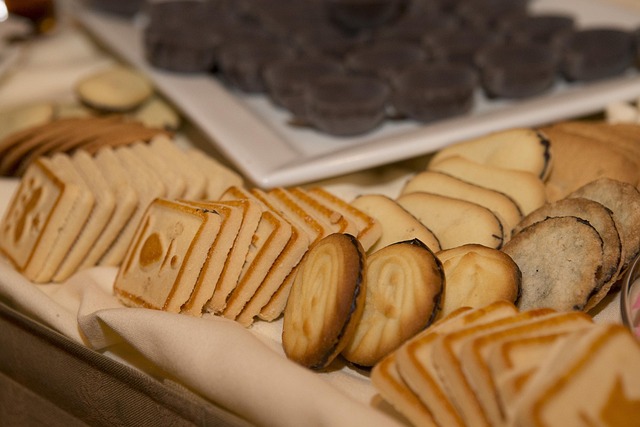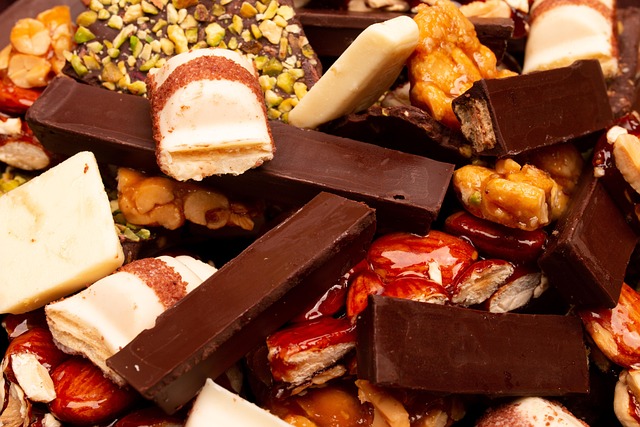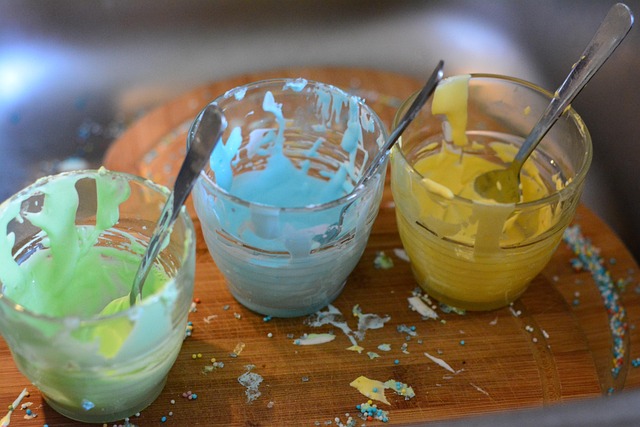Food-grade packaging is essential for protecting the quality, freshness, and appeal of decorated cookies. It must meet stringent global standards, resist moisture and handling damage, and preserve aesthetics while ensuring food safety through material certification. In a competitive market, designers balance visual appeal with functional protection using sustainable materials, strategic design placement, and airtight, nitrogen-filled packaging to extend shelf life. Eco-conscious consumers are increasingly demanding sustainable alternatives like compostable paper and fabric wraps, driving industry trends. Consumer safety is paramount, with labels providing crucial information for informed purchasing decisions regarding food-safe materials and storage guidelines.
Food-grade packaging is a critical component in ensuring the safety, freshness, and appeal of our favorite treats, like decorated cookies. This article delves into the multifaceted world of food-grade packaging, exploring key aspects from safety standards and material selection to design considerations and sustainable practices. We’ll uncover techniques for extending cookie shelf life and demystify regulatory guidelines, empowering consumers with knowledge about their packaging choices.
- Understanding Food-Grade Packaging: Safety Standards and Compliance
- The Role of Material Selection in Creating Decorated Cookies
- Visual Appeal Meets Functionality: Design Considerations for Packaging
- Preserving Freshness: Techniques to Extend Cookie Shelf Life
- Sustainable Practices in Food Packaging: Eco-Friendly Options
- Regulatory Guidelines and Labels: What Consumers Need to Know
Understanding Food-Grade Packaging: Safety Standards and Compliance

Food-grade packaging is an essential aspect of ensuring the safety and quality of edible products, including decorated cookies. These packages are designed to meet stringent safety standards set by regulatory bodies worldwide. The primary goal is to protect food items from contamination, preserving their freshness and taste while also preventing any potential health risks.
Compliance with these standards involves rigorous testing and certification processes. Packaging materials must be free from any harmful substances that could leach into the food, ensuring consumer safety. For example, when it comes to decorated cookies, the packaging should prevent moisture ingress, which can spoil the delicate treats. It also needs to withstand handling and transportation while maintaining its integrity to preserve the cookies’ aesthetic appeal and quality.
The Role of Material Selection in Creating Decorated Cookies

In the world of food-grade packaging, the creation of decorated cookies involves a delicate balance between aesthetics and functionality. Material selection plays a pivotal role in determining both the visual appeal and the overall quality of these delectable treats. The choice of packaging materials must be carefully considered to ensure they are not only safe for food contact but also enhance the cookie’s presentation.
For instance, optically clear films allow consumers to appreciate the intricate designs and colors on the cookies, enticing them with a visually pleasing experience. These materials should be free from harmful substances and resistant to moisture to maintain the freshness and integrity of the baked goods. By selecting appropriate packaging, manufacturers can preserve the texture, taste, and overall consumer delight associated with beautifully decorated cookies.
Visual Appeal Meets Functionality: Design Considerations for Packaging

In the world of food packaging, the adage “beauty is in the eye of the beholder” holds true. When it comes to decorated cookies, for instance, visual appeal plays a significant role in capturing consumers’ attention and making them choose one product over another on retail shelves. Packaging designers must strike a delicate balance between aesthetics and functionality, ensuring that the packaging not only looks visually appealing but also serves its intended purpose – to protect the delicate cookies during transit and storage while maintaining their freshness and quality.
This duality requires thoughtful consideration of materials, colors, graphics, and overall layout. For example, using high-quality, sustainable materials can appeal to environmentally conscious consumers while keeping in mind that the packaging must be robust enough to withstand various environmental conditions without compromising product integrity. Incorporating vibrant colors and captivating designs can enhance the cookie’s visual allure, but these elements must also be strategically placed to ensure ease of opening and clear product information visibility. Ultimately, successful food-grade packaging design for decorated cookies marries form with function, ensuring both that the end product looks as delicious as it tastes and that consumers have a satisfying unboxing experience.
Preserving Freshness: Techniques to Extend Cookie Shelf Life

Freshness is a key aspect when it comes to decorated cookies, as their delicate nature makes them prone to spoilage. To extend the shelf life of these delectable treats, several techniques can be employed. One effective method is the use of airtight packaging, which prevents exposure to oxygen and moisture, two primary culprits in cookie deterioration. High-quality food-grade packaging materials, such as mylar bags or glass jars with hermetic lids, are ideal for this purpose.
Additionally, incorporating nitrogen or carbon dioxide into the packaging creates an inert atmosphere that slows down oxidation and microbial growth. This is especially beneficial for decorated cookies, which often contain perishable ingredients like butter, cream, and various flavorings. Furthermore, proper temperature control during storage—keeping them chilled but not frozen—can significantly prolong their freshness, ensuring that each bite of these beautifully crafted cookies remains as delicious as the day they were baked.
Sustainable Practices in Food Packaging: Eco-Friendly Options

In recent years, there’s been a growing emphasis on sustainable practices in food packaging, driven by increasing consumer awareness and demand for eco-friendly options. Traditional plastic packaging, often used to preserve freshness and appeal to customers, has been criticized for its harmful environmental impact. Luckily, the food industry is responding with innovative alternatives that not only reduce waste but also maintain product quality, such as biodegradable materials, paper-based solutions, and refillable systems.
One notable example in the realm of baked goods is the shift towards sustainable packaging for decorated cookies. Instead of single-use plastic wrap or boxes, many bakeries are opting for compostable paper bags, cardboard containers, or even fabric wraps. These choices not only lower environmental impact but also enhance brand image and consumer loyalty among those concerned about sustainability.
Regulatory Guidelines and Labels: What Consumers Need to Know

When it comes to food-grade packaging, understanding regulatory guidelines and labels is crucial for consumers, especially when purchasing items like decorated cookies. These regulations are in place to ensure consumer safety and inform them about the contents of their packages. Labels provide essential information such as ingredients, nutritional facts, and storage instructions.
For instance, when buying decorated cookies, look for clear labeling indicating the use of food-safe materials, especially if the package includes edible components like sprinkles or icing. Regulatory bodies set standards to prevent any potential hazards, ensuring that packaging does not leach chemicals into foods. Always check for compliance labels, such as those certifying the product’s safety and quality, to make informed choices while shopping for treats like decorated cookies.














